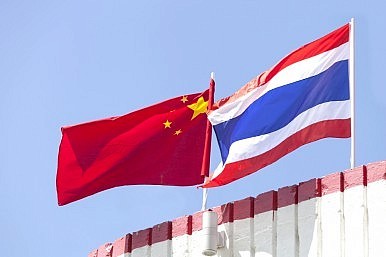After emerging from a meeting with visiting Chinese officials in Thailand's capital on Thursday, the host nation's Transport Minister, Prajin Juntong, informed the media that construction will commence on a joint $12-billion (74.7 billion yuan) railway project in September of this year.
A statement released by the Ministry of Transport on the same day explained that the project consists of four distinct stages, with 2020 identified as the scheduled year of completion.
However, even though the plans were agreed upon in Dec. 2014, further meetings are scheduled for February to finalize the extent of China's involvement.
In December, Premier Li Keqiang and Thailand's Prime Minister Prayuth Chan-ocha were photographed shaking hands after a one-hour meeting in which they met about the rail ink after it was initially flagged in 2013. The agreement at that stage stipulated that the China Railway Corporation would oversee the massive undertaking as part of a broader Chinese initiative, whereby its technical expertise is utilized in joint projects with Asian neighbors.
At present, the Southeast Asian country relies upon a 250-kilometer dual-track railway, described as painfully slow, and government officials are eagerly anticipating the involvement of the Chinese, which will see the establishment of two new dual-track lines.
Measuring a total length of 734 kilometers, the most extensive line will reach from the Nong Khai Province in the northeast, bordering Laos, to Map Ta Phut in the southeast of Bangkok, where an intensive industrial base will be able to make use of the upgraded transport route.
China perceives the dual-track project in the context of a more expansive regional network that will eventually link China's southwestern hub of Kunming with Singapore, the continent's second-busiest port.
Numerous media sources wrote of a "blossoming" relationship between the two nations, with Thailand's Deputy Foreign Minister Don Pramudwinai telling reporters: "This is a new era in Thailand and China's relationship."



























